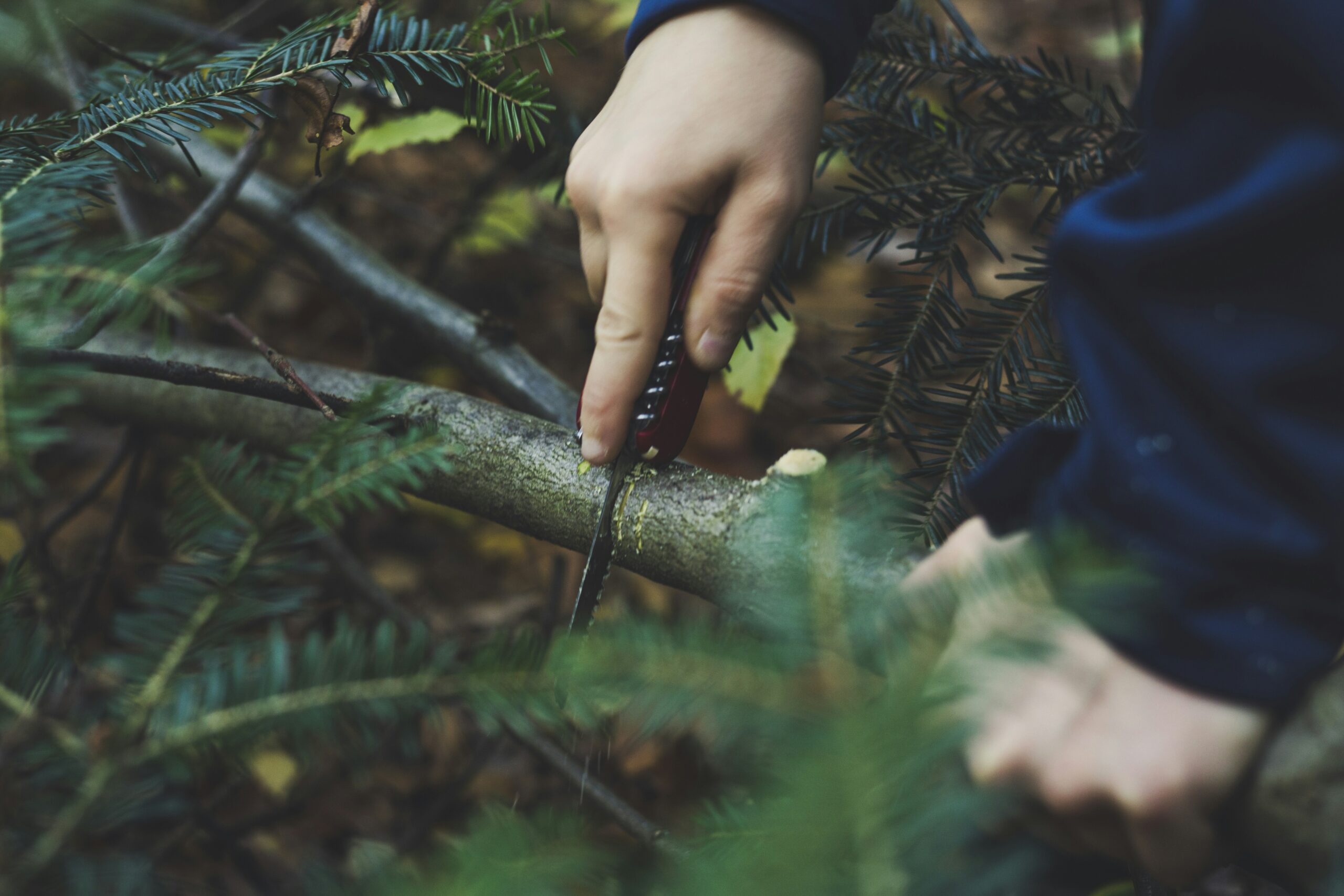In today’s unpredictable world, it’s crucial to possess the necessary survival skills to navigate through various challenging situations. Whether you’re an outdoor enthusiast, an adventurer, or simply want to be prepared for the unexpected, finding ways to practice and improve your survival skills regularly is essential. From honing your fire-building techniques to mastering navigation skills, this article will explore practical tips and strategies that will help you strengthen your survival skills and ensure you’re always ready to handle whatever comes your way. So, grab your backpack and join us on this exciting journey to become better equipped for any adventure or emergency!
Physical Fitness and Endurance
To fully enjoy and excel in outdoor activities and wilderness survival, it is essential to have a strong physical foundation. Building strength and endurance through regular exercise will not only enhance your performance but also ensure your safety in demanding situations. Strength training, such as weightlifting or bodyweight exercises, focuses on building muscle and increasing overall physical power. Incorporating these exercises into your routine will improve your ability to carry heavy loads, traverse difficult terrain, and handle physical challenges.
Alongside strength training, cardiovascular exercises are crucial for improving your endurance. Engaging in activities such as running, swimming, or cycling will elevate your heart rate and strengthen your cardiovascular system. This will enable you to endure long treks, hikes, or strenuous climbs without feeling fatigued too quickly. Cardiovascular exercises also improve lung capacity, ensuring that you can efficiently utilize oxygen during physically demanding situations.
Flexibility training is another important aspect of physical fitness. Stretching exercises improve muscle flexibility and joint mobility, reducing the risk of injuries and enhancing overall performance. Incorporating activities like yoga or Pilates into your routine will increase your body’s range of motion, making it easier to maneuver through challenging landscapes and perform various survival tasks.
Outdoor Activities and Adventures
Engaging in outdoor activities not only provides thrilling experiences but also offers valuable opportunities to enhance your survival skills. These activities will help you adapt to changing environments, develop resourcefulness, and test your knowledge of outdoor survival techniques. Here are a few outdoor activities that can significantly contribute to your skill development:
Hiking and Trekking
Hiking and trekking are excellent ways to immerse yourself in nature while simultaneously improving your endurance and navigational skills. Exploring diverse terrains, challenging trails, and unknown territories will teach you how to navigate, spot landmarks, and read topographic maps effectively.
Camping
Camping allows you to experience life in the great outdoors and familiarize yourself with the basics of surviving in a wilderness setting. Setting up tents, creating fire pits, and cooking meals over a campfire are essential skills that contribute to your overall survival repertoire.
Rock Climbing
Rock climbing not only tests your physical strength but also requires problem-solving skills and mental resilience. Climbing on natural rock formations or artificial walls enhances your ability to assess risks, overcome obstacles, and make critical decisions under pressure.
Orienteering
Orienteering is a navigational sport that challenges participants to reach various checkpoints using only a map and compass. This activity sharpens your map reading and compass navigation skills while honing your ability to find the most efficient routes through unfamiliar terrain.
Wilderness Navigation
Being able to navigate through the wilderness is a crucial skill for any survivalist. Several techniques can assist you in successfully finding your way in untamed environments. Here are some essential aspects of wilderness navigation:
Map Reading
Understanding how to read and interpret topographic maps is fundamental in navigating unfamiliar territories. Familiarize yourself with symbols, contours, and other markings on maps to identify landmarks, assess elevation changes, and plan efficient routes.
Compass Navigation
A compass is an invaluable tool for wilderness navigation. Learn how to use a compass to determine directions and orient yourself accurately. With the help of a map, compass, and key landmarks, you can confidently navigate through dense forests, over steep mountains, and across large bodies of water.
GPS Usage
While traditional navigation methods like map reading and compass navigation are vital, utilizing GPS technology can also assist you in finding your way in the wilderness. Learn how to operate a GPS device to accurately pinpoint your location, mark waypoints, and track your progress during hikes or treks.
Pace Counting
Pace counting is a technique used to estimate distance traveled by counting the number of steps taken. By measuring your stride length and practicing pace counting, you can have a rough idea of how far you have traveled. This skill is helpful when navigating without a map or using alternative navigation methods.
Fire Building and Campfire Cooking
Fire building is a crucial skill for survival and camping. Not only does it provide warmth and light, but it is also essential for cooking food and purifying water. Here are some key aspects of fire building and campfire cooking:
Fire Starting Techniques
Mastering various fire starting techniques is essential for survival situations. Learn how to start a fire using traditional methods such as friction fires (using a bow drill or hand drill), as well as modern tools like fire starters, matches, or lighters. Understanding the different materials to use for tinder, kindling, and fuel will greatly influence your success in starting and maintaining a fire.
Campfire Safety
Safety should always be a priority when building and tending to a campfire. Always ensure you have a clear area, away from flammable materials like dry grass or overhanging branches. Keep a bucket of water or sand nearby to extinguish the fire when necessary, and never leave a fire unattended. Familiarize yourself with the principles of fire safety to prevent accidents and minimize the impact on the environment.
Cooking Techniques
Once you have mastered the art of fire building, cooking over a campfire can be a rewarding experience. Learn how to prepare and cook meals using various methods such as grilling, boiling, or baking. Experiment with different recipes and campfire cooking accessories to expand your culinary skills while enjoying the great outdoors.

Primitive Shelter Construction
Knowing how to construct a shelter using natural materials is an essential skill in survival situations. Here are a few types of primitive shelters you should be familiar with:
Debris Hut
A debris hut is a shelter made using sticks, leaves, and other natural materials. It provides protection from the elements and helps conserve body heat. Learn how to select an appropriate location, build a sturdy framework, and insulate the shelter to ensure it effectively retains heat.
Lean-to Shelter
A lean-to shelter is a simple and quick-to-build shelter that utilizes a sloping roof made from branches or tree trunks. It is an effective option for creating a basic structure to protect against rain or wind. Mastering this shelter construction technique will provide you with a quick and reliable solution in emergency situations.
Tarp and Hammock Setup
Carrying a lightweight tarp and hammock can greatly enhance your comfort and safety in the wilderness. Learn how to set up a tarp to create waterproof shelter and protect yourself from the elements. Additionally, understanding how to properly hang a hammock will provide a comfortable sleeping arrangement above the ground, keeping you safe from insects and ground-dwelling creatures.
Water Sourcing and Purification
Access to clean and safe drinking water is vital for survival. Understanding how to find and purify water sources is crucial to prevent dehydration and waterborne illnesses. Here are some vital skills for water sourcing and purification:
Finding Water Sources
Knowing where to find water sources, such as streams, rivers, or natural springs, is essential. Learn to identify signs of nearby water sources, such as the presence of vegetation or animal tracks, and keep in mind that water may not always be visible on the surface. Additionally, familiarize yourself with navigating to nearby bodies of water using natural indicators like slope, vegetation, or sound.
Water Filtration
Filtering water is necessary to remove larger impurities, particles, or debris that may be present. Water filters can effectively remove protozoa, bacteria, and some viruses, making the water safer for consumption. Understand the different types of water filters available, their filtration capabilities, and how to properly use and maintain them.
Water Disinfection
Water disinfection is the process of eliminating or inactivating harmful microorganisms like viruses, bacteria, or parasites that may be present even after filtration. Methods such as boiling, chemical disinfection, or using ultraviolet light can effectively kill or neutralize these microorganisms, making the water safe to drink. Learn the appropriate disinfection techniques for different situations and choose the method most suitable for the resources available.

Foraging and Plant Identification
When resources are scarce, knowing how to identify edible plants and forage for food becomes essential. Here are some key skills for foraging and plant identification:
Edible Plant Identification
Understanding which plants are safe for consumption is crucial in the wilderness. Learn to recognize edible plants and differentiate them from poisonous ones. Familiarize yourself with key characteristics, such as leaf shape, color, and growth pattern, as well as any distinctive smells or tastes associated with safe plants.
Wild Food Foraging
Foraging for wild food involves identifying and gathering edible plants, fungi, and other natural food sources. Acquaint yourself with common edible plants in your region and learn their seasonal availability. Discovering alternative food sources like berries, nuts, insects, or small game can supplement your survival diet.
Mushroom Foraging
Mushrooms can provide valuable nutrition and flavor in a survival situation. However, it is essential to have a deep understanding of mushroom identification to avoid poisonous species. Learn about different mushroom types, their habitats, and key identifying features to safely forage and consume them.
Animal Tracking and Trapping
Knowing how to track animals and set traps can provide a source of food and increase your chances of survival. Here are some fundamental skills for animal tracking and trapping:
Animal Sign Identification
Learning to identify and interpret animal signs, such as tracks, droppings, feathers, or fur, is vital to understand the presence and behavior of local wildlife. These signs can lead you to water sources, potential food locations, or even shelter, as well as provide insight into the activities of predatory animals.
Setting Traps and Snares
Trapping is a skill that allows you to catch small game for sustenance. Mastering the construction and placement of traps, such as deadfalls, snares, or fish traps, will increase your chances of catching animals efficiently and ethically. Familiarize yourself with local trapping laws and regulations to ensure you are acting responsibly and legally.
Ethical Considerations
While trapping animals for food may be necessary in survival situations, it is vital to stay mindful of ethical considerations. Respect the environment, utilize humane trapping methods, and only take what you genuinely need. Understanding the delicate balance of ecosystems and minimizing your impact on wildlife ensures the long-term sustainability of the environment.
First Aid and Medical Skills
Being equipped with basic first aid knowledge and medical skills can make a significant difference in emergency situations. Here are some key skills to develop:
Basic First Aid
Knowing how to provide immediate care for injuries, illnesses, or medical emergencies is invaluable. Learn how to assess and treat wounds, control bleeding, perform CPR, administer first aid for burns or fractures, and manage other common injuries or ailments. It is essential to regularly review and practice these skills to maintain your confidence and competence.
CPR and AED Training
Cardiopulmonary resuscitation (CPR) and automated external defibrillator (AED) usage are critical life-saving skills. Enroll in a certified CPR and AED training course to learn the proper techniques for providing emergency aid to individuals experiencing cardiac arrest or other life-threatening situations.
Wilderness First Aid
Wilderness first aid focuses on medical care in remote or austere environments where professional medical assistance may be delayed or inaccessible. This specialized training equips you with the skills to assess, treat, and stabilize injuries or illnesses in wilderness settings. Enroll in a wilderness first aid course to learn techniques specific to outdoor and survival scenarios.
Survival Psychology and Mental Preparedness
Survival skills not only rely on physical capabilities but also heavily on mental preparedness and psychological resilience. Developing a strong mindset and mental fortitude is crucial for overcoming challenges in survival situations. Here are some key aspects to consider:
Staying Calm in Stressful Situations
Remaining calm and level-headed in stressful situations is essential for making sound decisions and effectively managing risks. Practice techniques, such as deep breathing exercises or meditation, to help reduce anxiety and maintain focus during challenging circumstances.
Building Resilience
Building resilience is about developing the ability to bounce back from adversity. Embrace challenges, learn from failures, and embrace a positive outlook. Cultivating resilience through outdoor experiences and self-imposed challenges gradually strengthens your mental fortitude and adaptability.
Problem Solving
Survival often requires quick thinking and effective problem-solving skills. Engage in activities that involve critical thinking, strategizing, and overcoming obstacles, both in simulated environments and real-life situations. This will train your mind to think creatively and find practical solutions when faced with unexpected challenges.
By regularly practicing and improving these survival skills, you can confidently navigate the wilderness, effectively handle emergencies, and ensure your safety in unexpected situations. Remember, outdoor adventures and survival training not only provide exciting experiences but also foster a deep connection with nature and enhance self-reliance. So, lace up your boots, grab your gear, and embark on the adventure of becoming a proficient wilderness survivor!


